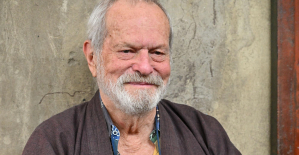Spain begins the summer with a severe pandemic. The worrying trend of increasing hospitalizations and accumulated incidences is accompanied by an increase in infection among professionals. This forces them to take sick leaves or the ongoing collapse in healthcare in July and august, when vacations are scarcely covered. Doctors and nurses. This is why Carolina Darias, the Minister of Health, recommended that the mask be used as Catalonia Madrid, Castilla y Leon requested it, due to the rise in covid-19-related infections.
This protection element was no longer mandatory as of April 20. However, the worsening epidemiological situation has led Darias demand its "responsible usage", particularly in vulnerable populations where it is impossible to maintain a meter and half of safety distance or in areas with poor ventilation.
The minister also appealed for those who haven't received the booster vaccine to be inoculated. This dose is the third in people who received Moderna or Pfizer. She also reminded that the Vaccine Conference continues its evaluation of data from the pandemic to decide if it is time to perform the fourth puncture. During a visit at Santander's Valdecilla Hospital, she said that the Ministry would continue to work with experts.
Experts are currently recommending two options. One, they recommend the booster shot to stop the surge in infections and hospitalizations. Two, they suggest waiting for the arrival of new vaccines that have been adapted to the variants. The European Medicines Agency (EMA) is currently in the analysis phase for the Spanish vaccine, developed by Hipra.
Contrary to the full guideline which reached 92.7% among people over 12 years old, booster doses are very low, particularly among the youngest. According to Health data, only 40.58% of those aged 20-29 years and 47.1% of those aged 30-39 years have had this third puncture. The index increases among those aged over 40, where it is 80.9%, and at 92.7% for those older than 60.
Coronavirus annual difference in Spain
For people over 60
Cumulative incidence*
2021
47.4
2022
996.3
800
1,000
0
200
400
600
*2021: Age group between 60-69 years. / 2022 : All people over 60
Hospitalized total
Patients with covidence at 1.94%
2021
2.357
2022
10,249
2,000
10,000
0
6,000
8.37% patients with covida
Total UCI
6.38%
2021
584
449
2022
5.06%
400
0
200
600
GRAPHIC:
L. CARVAJAL
Source: Ministry of Health
Coronavirus annual difference in Spain
For people over 60
Cumulative incidence*
Total UCI
Hospitalized total
8.37%
patients
covid
10,249
996.3
584
600
1,000
10,000
5.06%
6.38%
449
800
400
1.94%
patients
covid
600
6,000
400
200
2.357
200
2,000
47.4
0
0
0
2021
2022
2021
2022
2021
2022
*2021: Age group between 60-69 years old / 2022 : All people over 60
GRAPHIC: L. CARVAJAL
Source: Ministry of Health
Two years and four months later, the health emergency was declared. However, there was no indication that such a complex scenario would emerge. Many of the July 1 data from the Ministry of Health are objectively worse than those of the same day over the past two years. This Friday, the cumulative incidence for people over 60 years old, which is the only one measured in the "flu" phase, is at the threshold of 1,000 cases. It was 996.25 per 100,000 residents a year ago, 134.31, 47.39 among those aged 60-69, and 8.47 two years ago (after being in home confinement).
The numbers for hospitals have declined in the past twelve months. On Friday, there were 10,249 covid patients admitted. Of these, 449 were in ICU. This represents an occupancy of 8.37% (on Tuesday, it was 7.79%), and 5.06% intensive care ( 4.93%). This latest increase means that Spain moves up one step in the "covid traffic light" and is now 'controlled circulation' or 'low-risk'. Comparatively, 2 357 covid patients were admitted to hospital on July 1, 2021. This accounted for 1.94% and 584 (6.38%) respectively in the ICU (data for 2020 is not available).
Madrid has the highest number of cases per 100,000 people and Madrid is the most frequently visited. Madrid also has the highest rate of hospitalizations with 13.6% of its beds being occupied by covid patients. La Rioja, however, sets the national maximum pressure in ICU beds with 11.32%.
The Spanish Society of Emergency and Emergency Medicine warns that emergency services across the country are overloaded. This is due to an increase in demand, which has led to an increase of around 30% in charges in some areas. Covid infections are the main reason, but there are other factors that push health centers to their limits: an increase in respiratory diseases, a heat wave in June, or difficulties in Primary Care to provide appointments in short time frames, which forces patients to go straight to hospitals for emergency care.
The emergency physicians believe that the situation is "dynamited" by the shortage in doctors and the adjustment of resources due the summer holidays. They claim that Castilla-La Mancha is "saturated" with emergency personnel and that Asturias has a high number of consultations. Jose Antonio Garcia, president of Semes in Spain, says that these numbers have not been reached even during a pandemic. This is why the Valencian Community has offered more rest days to doctors who don't take vacations in July and August to help alleviate the situation.

 United States: divided on the question of presidential immunity, the Supreme Court offers respite to Trump
United States: divided on the question of presidential immunity, the Supreme Court offers respite to Trump Maurizio Molinari: “the Scurati affair, a European injury”
Maurizio Molinari: “the Scurati affair, a European injury” Hamas-Israel war: US begins construction of pier in Gaza
Hamas-Israel war: US begins construction of pier in Gaza Israel prepares to attack Rafah
Israel prepares to attack Rafah First three cases of “native” cholera confirmed in Mayotte
First three cases of “native” cholera confirmed in Mayotte Meningitis: compulsory vaccination for babies will be extended in 2025
Meningitis: compulsory vaccination for babies will be extended in 2025 Spain is the country in the European Union with the most overqualified workers for their jobs
Spain is the country in the European Union with the most overqualified workers for their jobs Parvovirus alert, the “fifth disease” of children which has already caused the death of five babies in 2024
Parvovirus alert, the “fifth disease” of children which has already caused the death of five babies in 2024 Falling wings of the Moulin Rouge: who will pay for the repairs?
Falling wings of the Moulin Rouge: who will pay for the repairs? “You don’t sell a company like that”: Roland Lescure “annoyed” by the prospect of a sale of Biogaran
“You don’t sell a company like that”: Roland Lescure “annoyed” by the prospect of a sale of Biogaran Insults, threats of suicide, violence... Attacks by France Travail agents will continue to soar in 2023
Insults, threats of suicide, violence... Attacks by France Travail agents will continue to soar in 2023 TotalEnergies boss plans primary listing in New York
TotalEnergies boss plans primary listing in New York La Pléiade arrives... in Pléiade
La Pléiade arrives... in Pléiade In Japan, an animation studio bets on its creators suffering from autism spectrum disorders
In Japan, an animation studio bets on its creators suffering from autism spectrum disorders Terry Gilliam, hero of the Annecy Festival, with Vice-Versa 2 and Garfield
Terry Gilliam, hero of the Annecy Festival, with Vice-Versa 2 and Garfield François Hollande, Stéphane Bern and Amélie Nothomb, heroes of one evening on the beach of the Cannes Film Festival
François Hollande, Stéphane Bern and Amélie Nothomb, heroes of one evening on the beach of the Cannes Film Festival Skoda Kodiaq 2024: a 'beast' plug-in hybrid SUV
Skoda Kodiaq 2024: a 'beast' plug-in hybrid SUV Tesla launches a new Model Y with 600 km of autonomy at a "more accessible price"
Tesla launches a new Model Y with 600 km of autonomy at a "more accessible price" The 10 best-selling cars in March 2024 in Spain: sales fall due to Easter
The 10 best-selling cars in March 2024 in Spain: sales fall due to Easter A private jet company buys more than 100 flying cars
A private jet company buys more than 100 flying cars This is how housing prices have changed in Spain in the last decade
This is how housing prices have changed in Spain in the last decade The home mortgage firm drops 10% in January and interest soars to 3.46%
The home mortgage firm drops 10% in January and interest soars to 3.46% The jewel of the Rocío de Nagüeles urbanization: a dream villa in Marbella
The jewel of the Rocío de Nagüeles urbanization: a dream villa in Marbella Rental prices grow by 7.3% in February: where does it go up and where does it go down?
Rental prices grow by 7.3% in February: where does it go up and where does it go down? Even on a mission for NATO, the Charles-de-Gaulle remains under French control, Lecornu responds to Mélenchon
Even on a mission for NATO, the Charles-de-Gaulle remains under French control, Lecornu responds to Mélenchon “Deadly Europe”, “economic decline”, immigration… What to remember from Emmanuel Macron’s speech at the Sorbonne
“Deadly Europe”, “economic decline”, immigration… What to remember from Emmanuel Macron’s speech at the Sorbonne Sale of Biogaran: The Republicans write to Emmanuel Macron
Sale of Biogaran: The Republicans write to Emmanuel Macron Europeans: “All those who claim that we don’t need Europe are liars”, criticizes Bayrou
Europeans: “All those who claim that we don’t need Europe are liars”, criticizes Bayrou These French cities that will boycott the World Cup in Qatar
These French cities that will boycott the World Cup in Qatar Medicine, family of athletes, New Zealand…, discovering Manae Feleu, the captain of the Bleues
Medicine, family of athletes, New Zealand…, discovering Manae Feleu, the captain of the Bleues Football: OM wants to extend Leonardo Balerdi
Football: OM wants to extend Leonardo Balerdi Six Nations F: France-England shatters the attendance record for women’s rugby in France
Six Nations F: France-England shatters the attendance record for women’s rugby in France Judo: eliminated in the 2nd round of the European Championships, Alpha Djalo in full doubt
Judo: eliminated in the 2nd round of the European Championships, Alpha Djalo in full doubt


















